Step-by-step instructions for growing pepper seedlings at home for novice vegetable growers
Most summer residents prefer to grow peppers in seedlings. Seedlings are the guarantor of a rich and tasty harvest, they help the seeds to adapt faster to external conditions and develop immunity to diseases and pests. Seedlings are planted according to certain rules, it is important to choose a suitable container and soil, to observe the sowing time.
Let's take a closer look at what the cultivation of pepper seedlings is and what preparation secrets a novice vegetable grower needs to know.
The content of the article
What you need to grow pepper seedlings
Growing pepper seedlings requires a suitable place, high-quality soil and containers. What is the first thing to know?
Appropriate place
Pepper is picky about light, so they place seedlings in the sunniest place in the house. As a rule, it is a window sill or a table with phytolamps. The optimum air temperature for growing is about 25 ° C. In the future, it is recommended to reduce it to 18-20 ° C.
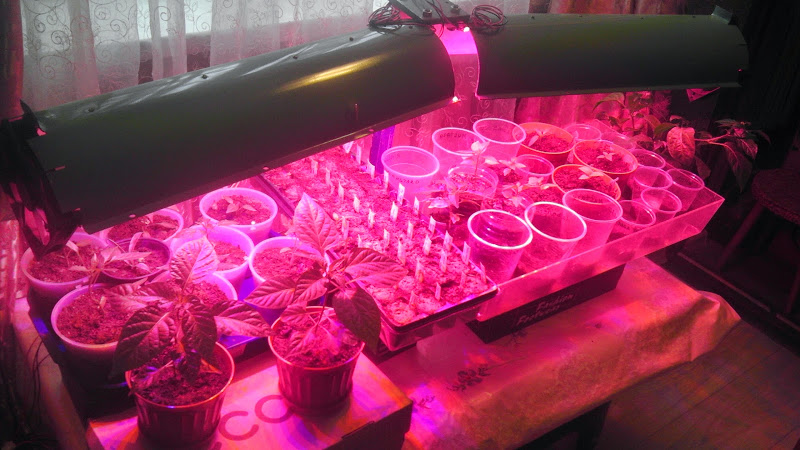 Seedlings are advised to keep away from drafts and air conditioners, otherwise it will negatively affect the development of seedlings. If there are small children or pets in the house, then the seedlings are placed so that they cannot get it.
Seedlings are advised to keep away from drafts and air conditioners, otherwise it will negatively affect the development of seedlings. If there are small children or pets in the house, then the seedlings are placed so that they cannot get it.
Container and soil
Peppers are sensitive to picking, so it is better to plant seedlings in one large container. Any clean container will do: flower pot, wooden box, plastic cassette with pallet. You can purchase a container at any gardening or hardware store. It is thoroughly disinfected before use. Bleach and Bordeaux liquid are recognized as excellent means. The container is placed in the solution for 30 minutes, after which it is washed and dried.
 As soil, use ready-made compounds or land from the garden. The "Universal" or "Krepysh" soil is recognized as the best purchased option. The compositions contain the required level of acidity, are equipped with a large amount of minerals, and are disinfected from infections. However, some gardeners prefer to water the prepared soil with a potassium permanganate solution in order to carry out additional disinfection.
As soil, use ready-made compounds or land from the garden. The "Universal" or "Krepysh" soil is recognized as the best purchased option. The compositions contain the required level of acidity, are equipped with a large amount of minerals, and are disinfected from infections. However, some gardeners prefer to water the prepared soil with a potassium permanganate solution in order to carry out additional disinfection.
When self-preparing the soil, they use soil from the garden, peat, humus, sawdust and ash. All components are mixed in a ratio of 4: 1: 1: 1. The mixture is then sieved and steamed for an hour in a double boiler to avoid future weeds and diseases. Vermiculite is often added to the soil. This substance retains moisture in the ground and makes it looser, which has a beneficial effect on the quality of the crop.
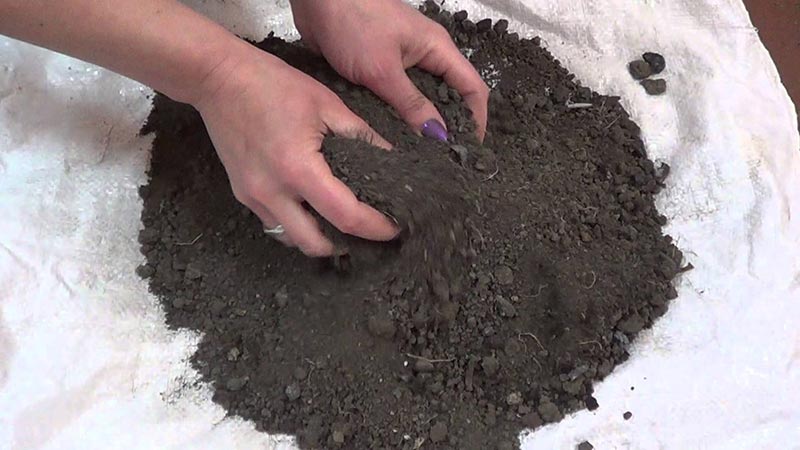
Materials and tools
In addition to packaging, gardeners prepare in advance pipettes from which they will water the sprouts. The pipette is convenient to use, as moisture gets directly under the root, bypassing the stems and leaves. Tweezers are also required to easily place small seeds in the soil.
At first, the seedlings are covered with a plastic bag or film so that the moisture does not evaporate. The dressings are mixed in small bowls using a regular spoon or pencil.
The timing of planting seeds for seedlings
To grow a good harvest, sowing dates are observed. Most varieties mature within 100-150 days from planting. Seedlings are prepared for them in late February - early March.
The specific sowing dates depend on the variety and the growing region. In the Urals and Siberia, seedlings are prepared on February 10-15, in the south of Russia - on March 5-10.
Lunar landing
The lunar calendar helps gardeners to calculate the most favorable days for buying and planting seeds. In 2019, astrologers advise planting plants during those periods when the Moon is in the first phase and falls on the days of Cancer, Pisces, Scorpio, Libra and Aries.
It is interesting:
Pests of sweet pepper and the fight against them.
Aphids appeared on pepper in the greenhouse: what to do and how to defeat the pest.
How to properly plant pepper seedlings
In addition to containers and land, special attention is paid to the preparation of seeds. Let's take a closer look at how they are disinfected and planted.
Seed preparation
Experienced summer residents are advised to purchase seed only in proven places. When buying, they carefully study the information on the label, pay attention to the integrity of the package. High-quality and heavy seeds are selected for seedlings. For this, seeds are poured into a jar of water and the liquid is stirred clockwise. Those specimens that have sunk to the bottom are selected for planting.
An obligatory stage of seed preparation is disinfection. The following methods help to disinfect seeds:
- heating in the oven for two hours;
- soaking in a solution of potassium permanganate or succinic acid for 24 hours;
- disinfection of seeds with hydrogen peroxide.
Then the seeds are germinated: placed in a damp cloth and removed in a warm place for 10 days. Growth stimulants help the pepper germinate faster, which saturates the vegetable with the necessary vitamins for development.
Landing scheme and step by step instructions
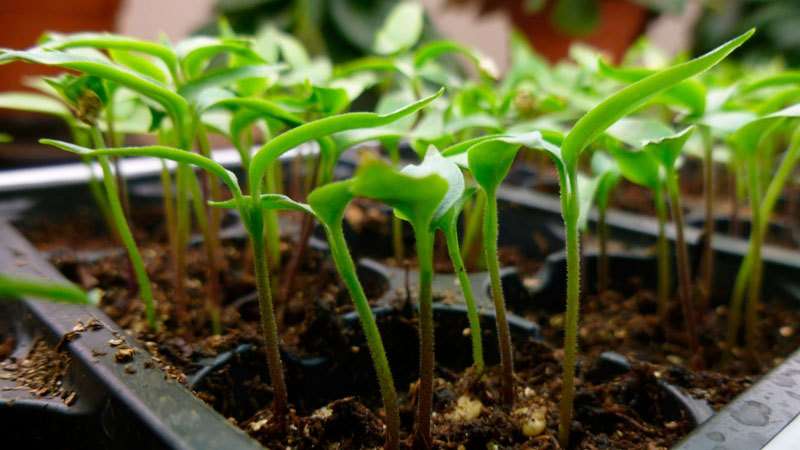
How to plant seeds? They are planted according to the standard scheme. The distance between the holes should be at least 10 cm, and the distance in the aisle should be about 10-15 cm. If compact flower pots are used for planting, then one seedling is grown in one container.
Step-by-step planting instructions:
- make holes with a simple pencil;
- 1-2 seeds are placed in each with tweezers;
- sprinkle it with earth on top and lightly slap it with your palm;
- watered with warm, settled water;
- cover with foil and put away in a sunny place.
Important! If several varieties are grown at once, then markings are made for each, where the name of the pepper and the planting date are indicated. Such a simple rule helps not to get confused in the plants and plant the vegetable in the garden in time.
How to grow pepper seedlings
Pepper care involves timely watering, feeding, adherence to heat and light. The germination of pepper and its taste depend on these procedures.
Care rules
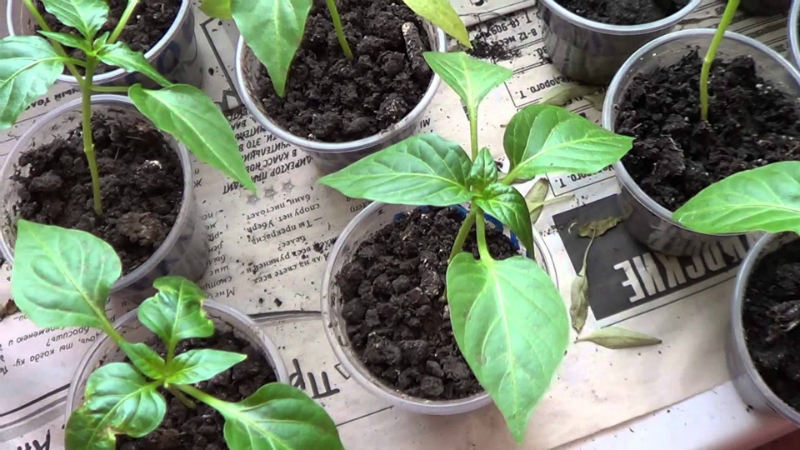 Peppers need regular watering. The seedlings are moistened every five days, while it is important not to overmoisten the ground. A pipette is used for watering. Before moistening, it is advised to gently loosen the ground at the base so that the water lingers in the soil for a longer time and flows to the roots.
Peppers need regular watering. The seedlings are moistened every five days, while it is important not to overmoisten the ground. A pipette is used for watering. Before moistening, it is advised to gently loosen the ground at the base so that the water lingers in the soil for a longer time and flows to the roots.
Water temperature for irrigation is about 18 ° С. It is better not to use cold tap water. In a small container, water evaporates faster, so the condition of the earth is checked daily. Favorable air humidity is about 70%.
Important! Peppers must be provided with additional lighting. If there is no special phytolamp at hand, then use a fluorescent one. A sign that the sprouts lack light are thin and long stems, pale leaves.
Some gardeners do without fertilizing, but most still prefer to fertilize seedlings with mineral complexes and organic matter. The procedure is carried out every two weeks. Top dressing improves the taste of fruits and protects them from diseases and pests.
The following drugs have a beneficial effect on pepper: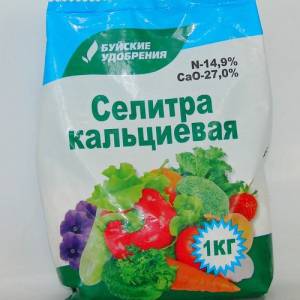
- sodium nitrate;
- wood ash;
- liquid bird droppings;
- mineral complex "Bogatyr" or "Zdraven";
- growth stimulator "Heteroauxin";
- means "Kimira".
Seedling picking
A pick is necessary if the seeds originally grew in small containers. Over time, the root system needs more space for development, so the seedlings are transplanted into larger containers.
As a rule, peppers dive 15-20 days after sprouting. Watering is stopped five days before the procedure.
How to make a pick:
- Pour soil into a larger container and pour warm water. Make a hole 4-5 cm deep.
- Use a spatula to dig out the sprout and place in a new container.
- Plant the seedlings up to the cotyledonous leaves, gently pressing the soil to the roots with your fingers.
- Drizzle the pepper with water at room temperature.
Possible problems and ways to solve them
Even if all agrotechnical rules are followed, pepper seedlings can develop slowly. There may be several reasons for this:
- Diseases... Due to cold water or waterlogging, the plant becomes ill with a fungal infection or bacterial spot. The most common diseases are root rot, black leg, late blight, Fusarium. Gardeners advise to carry out preventive measures: water the ground with Bordeaux liquid, fertilize with ash and nettle infusion.
- Lack of light. Even if there is enough solar heat in the room, it is still better to organize additional lighting using phyto lamps or fluorescent devices.
- An excess of nitrogen-containing dressings... This is signaled by yellow and dry leaves, weak stems. The problem is solved by adding wood ash and thorough watering.
- Increased acidity of the earth... We are talking about both purchased soils and self-prepared land. River sand helps to reduce the acidity of the soil.
Tips from experienced gardeners

In the north of the country, it is recommended to plant seedlings in advance, so that the seedlings have time to gain growth. Before planting, containers, seeds and soil are thoroughly disinfected. The most popular remedy is a solution of potassium permanganate. Powder is sold in every pharmacy at a low price.
Also, farmers are advised to observe the following recommendations:
- check seeds for germination;
- do not plant peppers too close to each other;
- if possible, plant the vegetable immediately in a larger container in order to avoid picking;
- prepare labeling;
- pour warm water at room temperature;
- avoid getting water on stems and leaves;
- feed seedlings in a timely manner;
- monitor the level of moisture in the soil.
Read also:
High-yielding and early ripening variety of pepper "Morozko" for greenhouses.
The best varieties of purple pepper and their features.
The benefits and harms of green bell pepper for the health of women, men and children.
Conclusion
Bell peppers are grown outdoors, in polycarbonate greenhouses or hotbeds. To obtain a rich harvest, seedlings are prepared. Disembarkation takes place in late February - early March. They buy seeds in proven places, disinfect them. As soon as the seeds are in the ground, they are sprinkled with soil on top and moistened. The next watering is organized only after a week.
Pepper loves light and warmth, so it is better to place the container with seedlings on the windowsill. Every two weeks, the peppers are fed with organic fertilizers or mineral dressings. Bird droppings, ammonium nitrate, urea and nitrogen-containing fertilizers improve the quality of fruits.